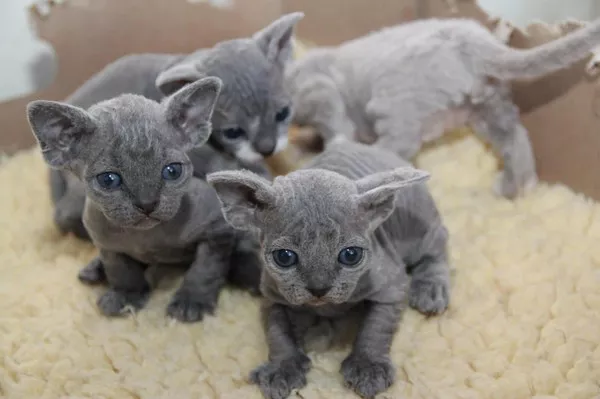Cat owners often face the challenge of bathing their feline companions, a task that can be met with resistance from both parties involved. While specialized cat shampoos are available in the market, some pet owners may wonder if using human shampoo is a viable alternative. In this comprehensive guide, we explore the intricacies of bathing cats, the unique needs of their fur and skin, potential risks associated with human shampoos, and alternative options for maintaining your cat’s hygiene.
Understanding the Feline Resistance to Baths
Cats are notorious for their aversion to water, and bathing them can be a daunting experience for both pet and owner. Unlike dogs, many cats have a natural grooming instinct, and they meticulously clean themselves through licking and grooming. This behavior stems from their wild ancestors, emphasizing the importance of maintaining a clean coat for survival.
When faced with the prospect of a bath, cats may exhibit signs of stress, anxiety, or outright rebellion. Scratching, biting, and vocal protests are not uncommon, making the bathing process a delicate endeavor that requires patience and proper handling techniques.
The Importance of Cat-Specific Shampoos
Cats possess unique fur and skin characteristics that differ from those of humans and even dogs. Their fur consists of delicate layers, and their skin is more sensitive and prone to dryness. Using shampoos formulated for cats takes these factors into account, providing a gentle and moisturizing solution that caters to their specific needs.
Cat shampoos are designed to maintain the natural oils on a cat’s skin, preventing excessive dryness and irritation. They also consider the pH balance of feline skin, which is more acidic than that of humans. Disrupting this balance with unsuitable products can lead to skin issues, including dryness, flakiness, and increased susceptibility to infections.
Risks Associated with Human Shampoos
The desire to use readily available human shampoos on cats may arise from convenience or a belief that it serves the same purpose. However, this approach can pose significant risks to a cat’s well-being. Human shampoos often contain ingredients, fragrances, and chemical formulations that can be harsh on feline skin.
Skin Irritation: Human shampoos may contain perfumes, dyes, and cleansing agents that can cause skin irritation in cats. Their sensitive skin is more prone to adverse reactions, leading to discomfort and potential health issues.
Dryness and Flakiness: The pH level of human skin differs from that of feline skin. Using human shampoos can disrupt the natural balance, leading to dryness, flakiness, and an increased likelihood of dermatological problems.
Toxic Ingredients: Some human shampoos contain ingredients that are safe for humans but toxic to cats when ingested or absorbed through the skin. Cats are meticulous groomers, and any residue left on their fur can be ingested during subsequent grooming sessions.
Allergic Reactions: Cats may exhibit allergic reactions to certain components found in human shampoos. These reactions can manifest as itching, redness, swelling, or more severe responses, necessitating veterinary attention.
Safe Alternatives for Bathing Cats
Given the potential risks associated with using human shampoos on cats, pet owners may wonder about safe alternatives. Fortunately, there are cat-specific shampoos available that cater to various needs, including those formulated for sensitive skin, moisturizing, or addressing specific skin conditions.
Hypoallergenic Cat Shampoos: These shampoos are designed to minimize the risk of allergic reactions and skin irritations. They often exclude common allergens, fragrances, and harsh chemicals.
Oatmeal-Based Shampoos: Oatmeal has soothing properties that can benefit cats with sensitive skin. Oatmeal-based cat shampoos help alleviate dryness and irritation, providing a gentle cleansing experience.
Veterinarian-Recommended Shampoos: In cases where a cat has specific skin conditions, veterinarians may recommend specialized shampoos tailored to address those issues. These formulations are designed to be effective while prioritizing the cat’s skin health.
Waterless Cat Shampoos: Waterless shampoos offer an alternative for cat owners who want to avoid traditional baths. These products come in spray or foam forms and can be applied directly to the cat’s fur, offering a convenient solution for maintaining cleanliness between baths.
Bathing Tips for Cat Owners
Regardless of the shampoo chosen, the bathing process requires a strategic approach to minimize stress for both the cat and the owner. Here are some tips for successfully bathing your cat:
Prepare in Advance: Have all necessary supplies, including the chosen cat shampoo, towels, and a non-slip mat, ready before attempting to bathe your cat.
Choose a Calm Environment: Select a quiet and calm space for the bath to minimize stress. Close windows and doors to prevent escape attempts.
Gentle Introduction: Gradually introduce your cat to water before attempting a full bath. Allow them to explore a shallow basin of water or use a damp cloth for initial interactions.
Use Appropriate Restraints: To prevent scratches or sudden escapes, use gentle restraints such as a cat harness or a non-restrictive towel.
Positive Reinforcement: Offer treats, praise, and positive reinforcement throughout the process to create a positive association with bathing.
Be Mindful of Water Temperature: Use lukewarm water to ensure the cat’s comfort. Test the water temperature with your wrist before applying it to your cat.
Thorough Rinsing: Ensure all shampoo is thoroughly rinsed from the cat’s fur. Residual shampoo can lead to skin irritation.
Drying Carefully: Gently dry your cat with a towel, avoiding excessive rubbing. If your cat tolerates it, you can use a low-heat setting on a hairdryer.
See Also: Top 7 Picks for Cat Shampoos
Conclusion
While the temptation to use human shampoo on a cat may arise, prioritizing the feline-specific needs of your pet is essential for their health and well-being. Cat shampoos formulated with their unique skin and fur characteristics in mind provide a safer and more effective solution. By understanding the risks associated with human shampoos and exploring suitable alternatives, cat owners can ensure a positive bathing experience that contributes to the overall health and happiness of their feline companions.



























